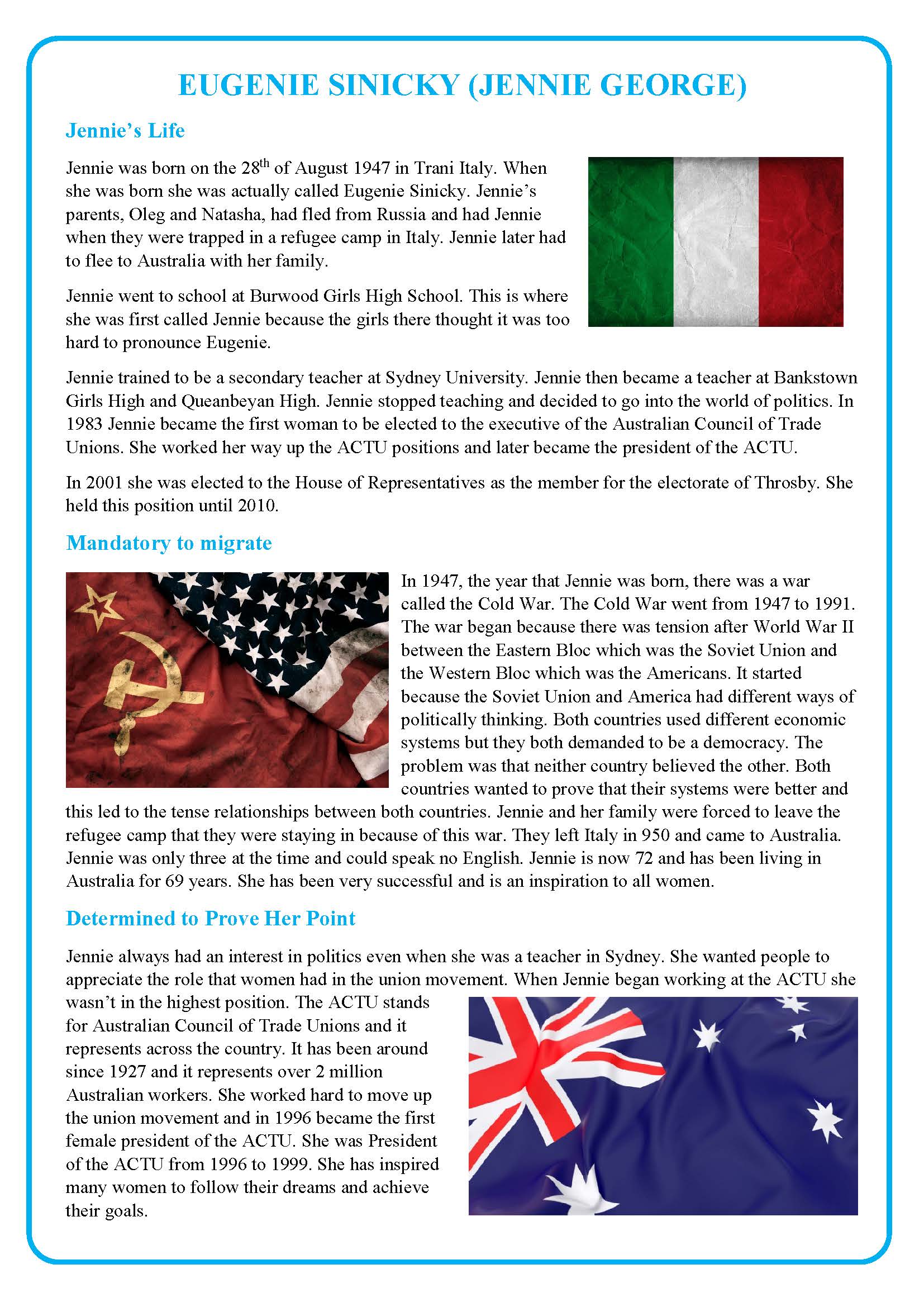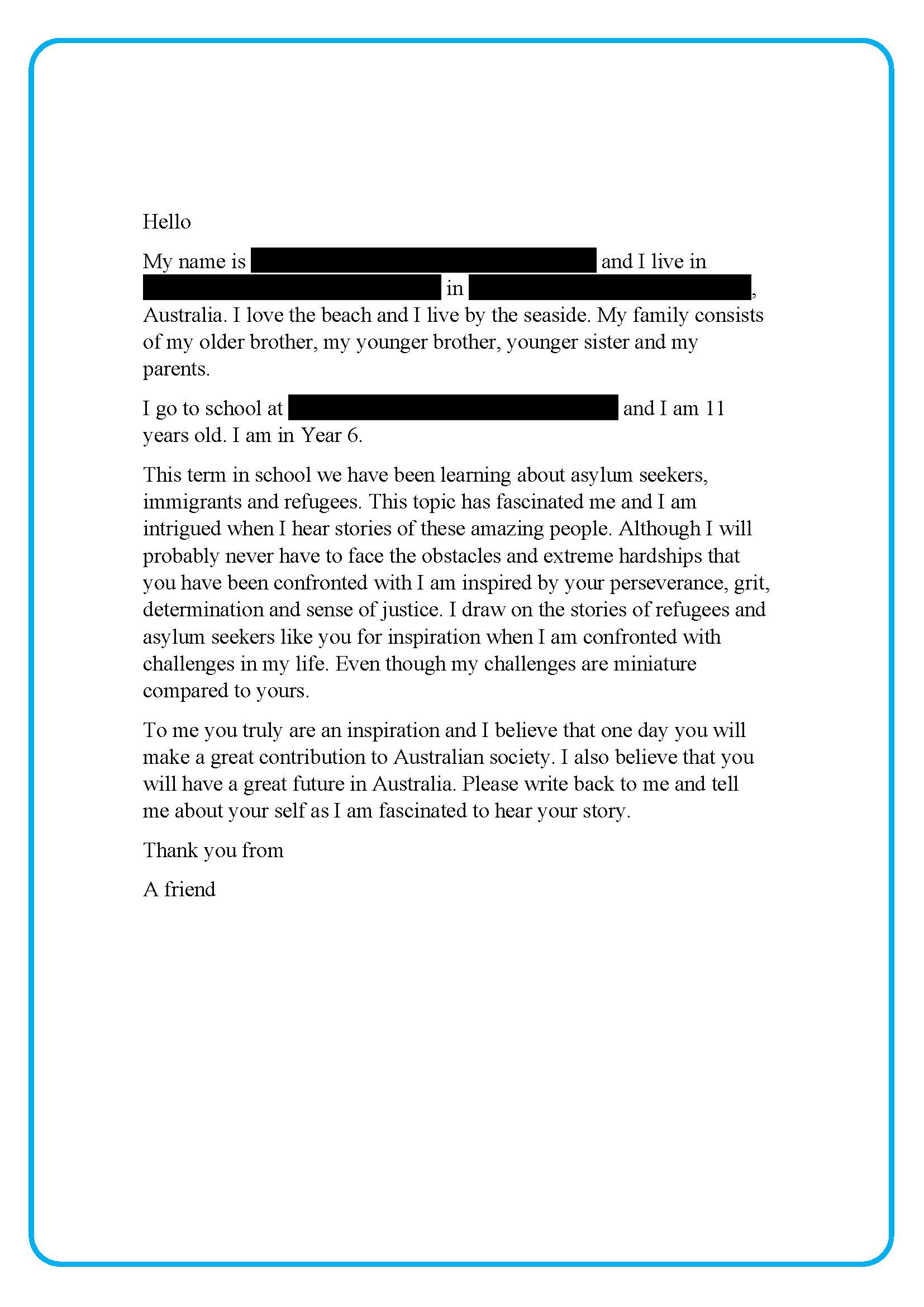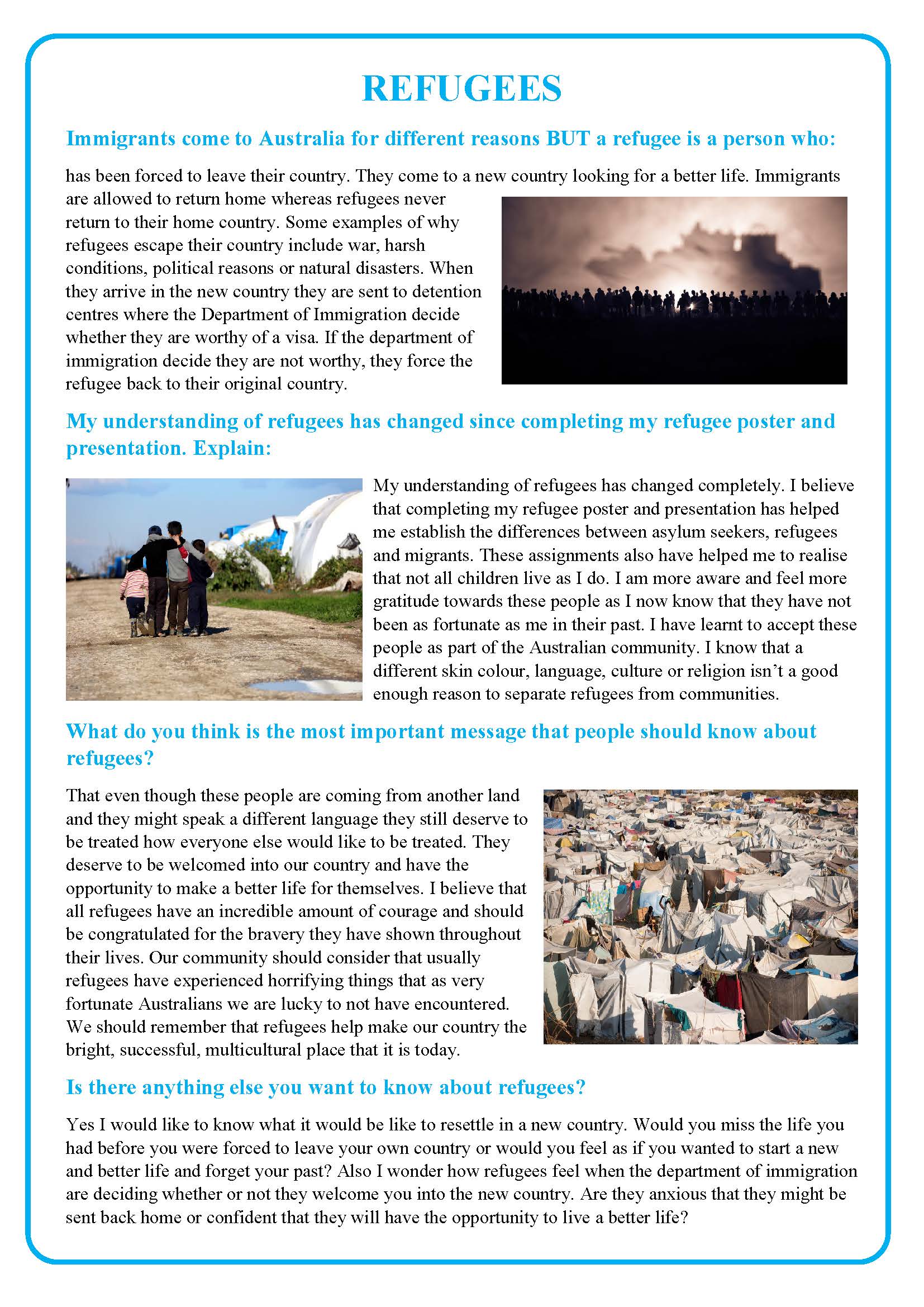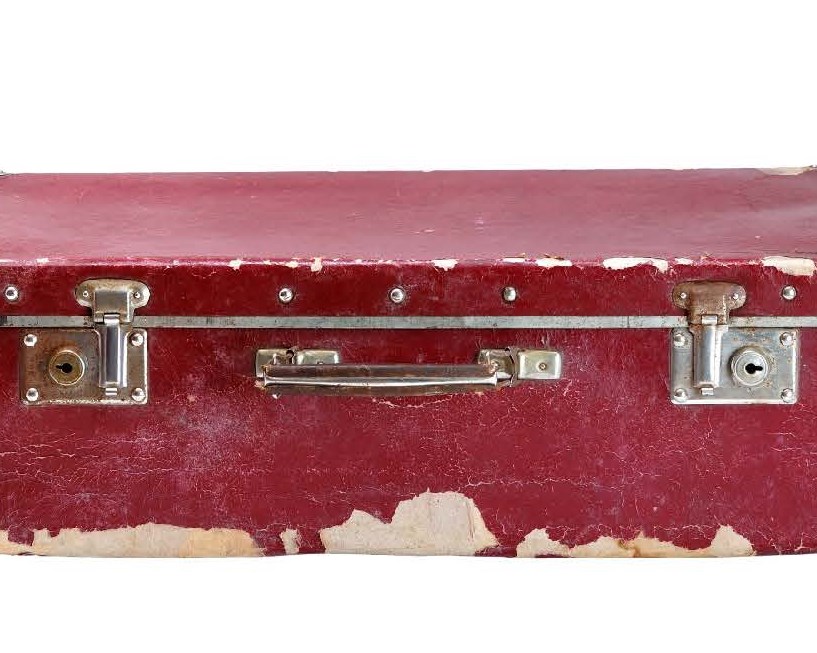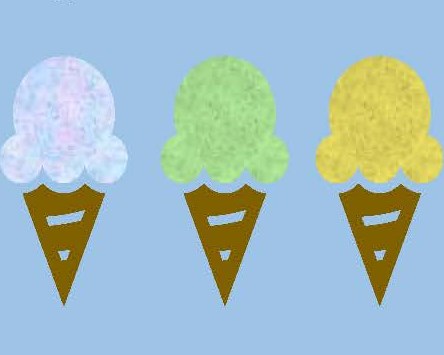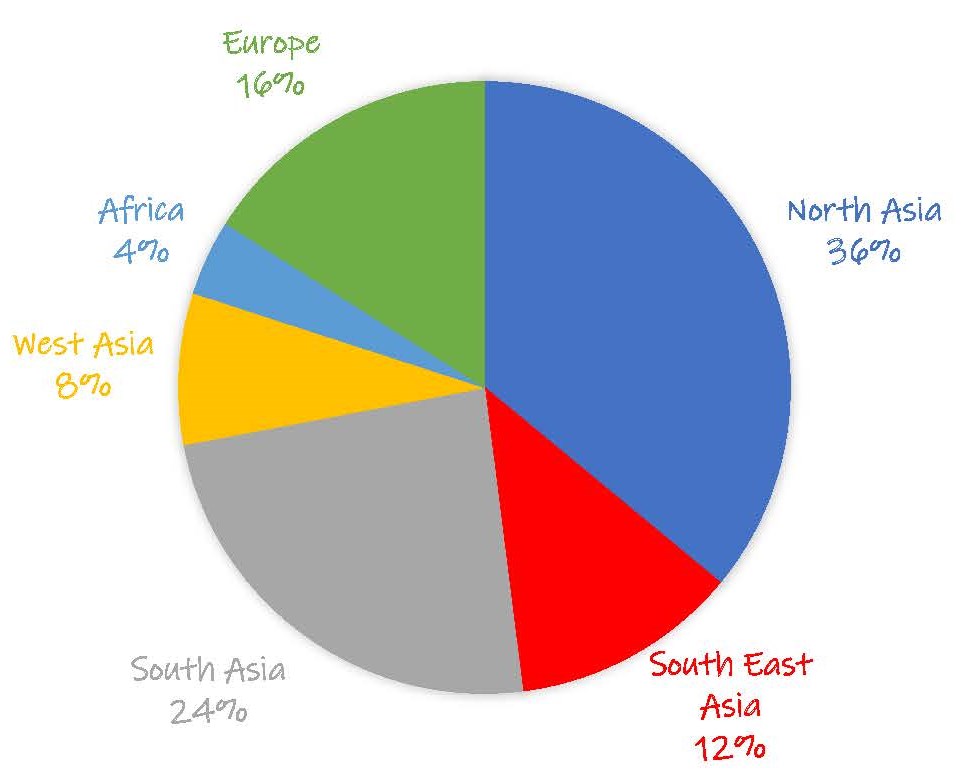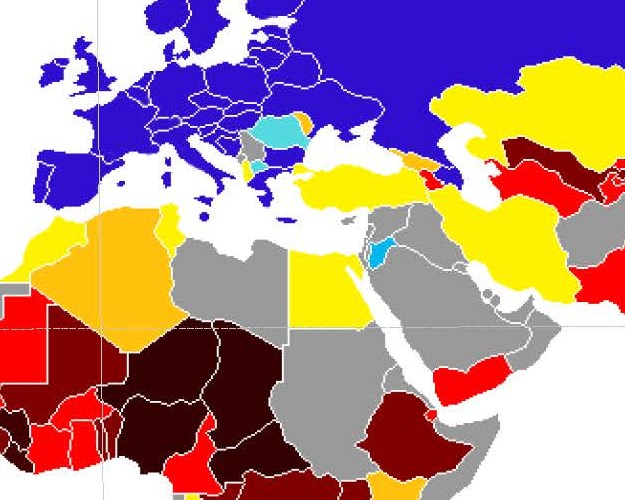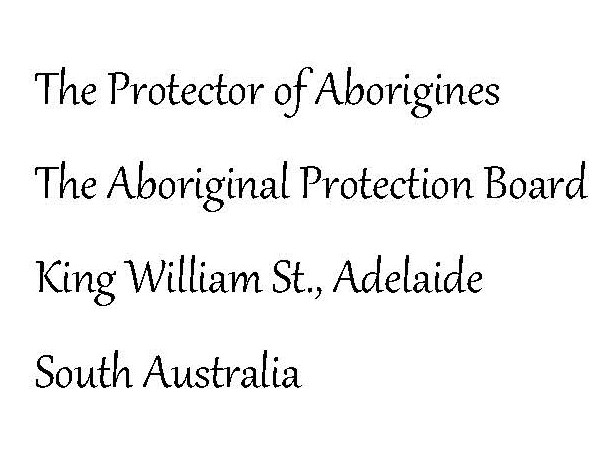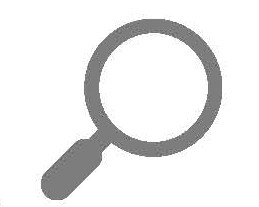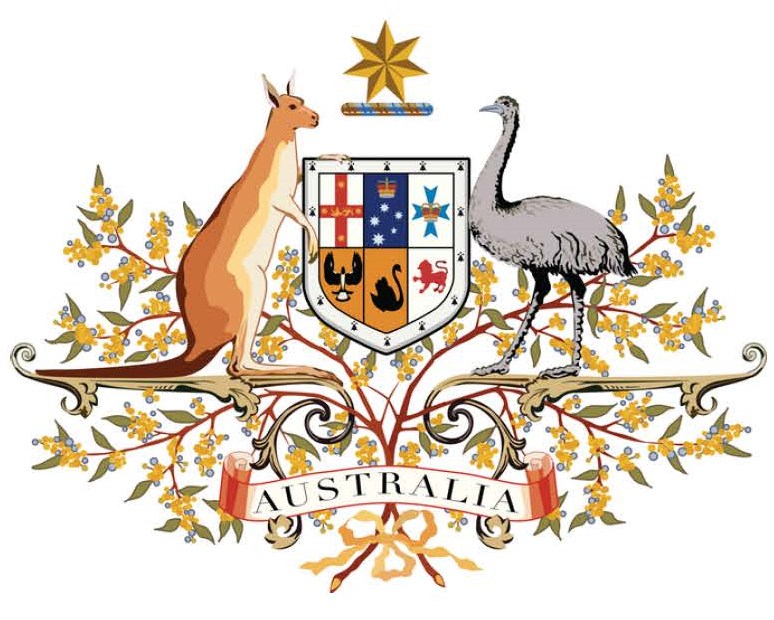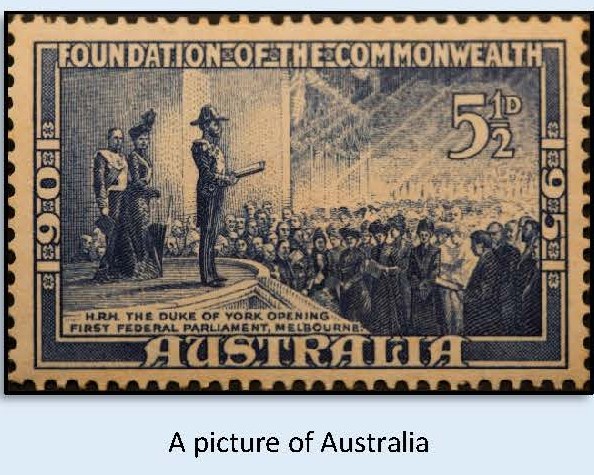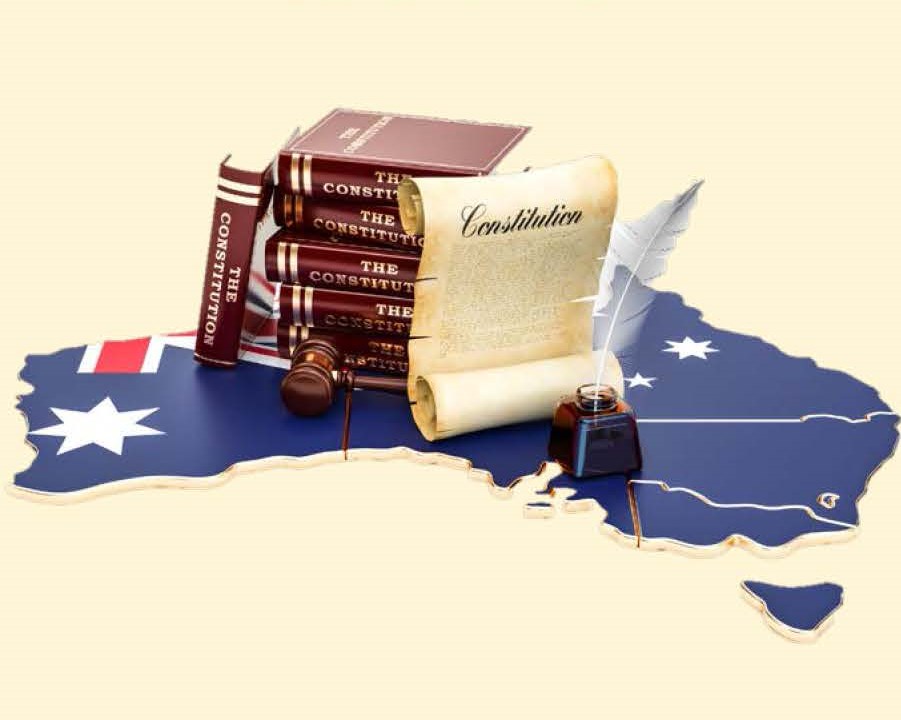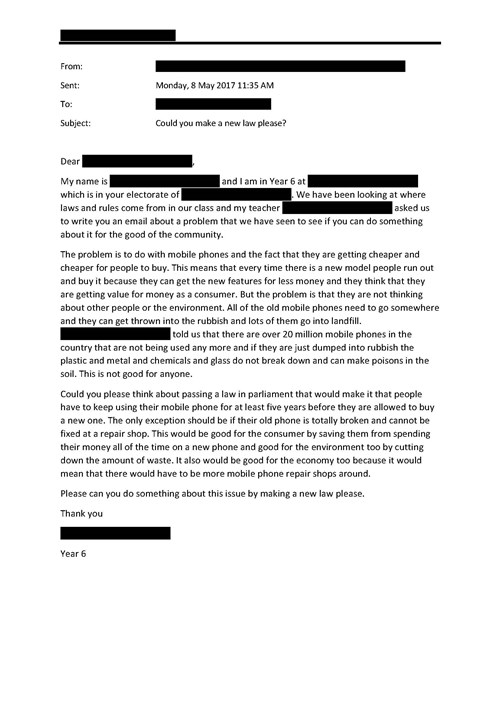Refugees and citizenship
Summary of task
Students completed three tasks to explore different perspectives on the experiences of refugees in Australia. These tasks took place at differing stages of a unit of work on migration. Firstly, students were provided with a list of notable Australians who were born overseas and came to Australia as refugees. They researched the experiences and contribution of an individual from the list using their own inquiry questions, and presented their findings as a one-page summary. This particular task was completed in class and in the school library over four 50-minute lessons. Later in the unit, after watching a selection of film clips, news footage and reading primary and secondary sources, students wrote a letter to a refugee held in a detention centre. This second task was completed in class during one 50-minute lesson. The unit concluded with students reflecting on their learning by answering a series of questions. This third task was completed in class during one 50-minute lesson.
Achievement standard
By the end of Year 6, students explain the significance of an event/development, an individual or group. They identify and describe continuities and changes for different groups in the past. They describe the causes and effects of change on society. They compare the experiences of different people in the past.
Students sequence information about events and the lives of individuals in chronological order and represent time by creating timelines. When researching, students develop appropriate questions to frame a historical inquiry. They identify a range of primary and secondary sources and locate, collect, organise and categorise relevant information to answer inquiry questions. They analyse information or sources for evidence to determine their origin and purpose and to identify different perspectives. Students develop texts, particularly narrative recounts and descriptions. In developing these texts and organising and presenting their information, they use historical terms and concepts, and incorporate relevant sources.
By the end of Year 6, students describe the location of places in selected countries in absolute and relative terms. They describe and explain the diverse characteristics of places in different locations from local to global scales. They describe the interconnections between people in different places, identify factors that influence these interconnections and describe how interconnections change places and affect people. They identify and compare different possible responses to a geographical challenge.
Students develop appropriate geographical questions to frame an inquiry. They locate, collect and organise useful data and information from primary and secondary sources. They record and represent data and the location of places and their characteristics in different graphic forms, including large-scale and small-scale maps that use cartographic conventions of border, source, scale, legend, title and north point. Students interpret maps, data and other information to identify, describe and compare spatial distributions, patterns and trends, to infer relationships and to draw conclusions. They present findings and ideas using geographical terminology and digital technologies in a range of communication forms. They propose action in response to a geographical challenge and describe the probable effects of their proposal.
By the end of Year 6, students explain the role and importance of people, institutions, and processes to Australia’s democracy and legal system. They describe the rights and responsibilities of Australian citizens and the obligations they may have as global citizens.
Students develop appropriate questions to frame an investigation about the society in which they live. They locate, collect and organise useful information from a range of different sources to answer these questions. They examine sources to determine their origin and purpose and describe different perspectives. They evaluate information to draw conclusions. When planning for action, they identify different points of view and solutions to an issue. They reflect on their learning to identify the ways they can participate as citizens in the school or elsewhere. They present ideas, findings, viewpoints and conclusions in a range of communication forms that incorporate source materials and civics and citizenship terms and concepts.
